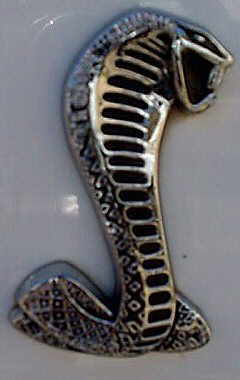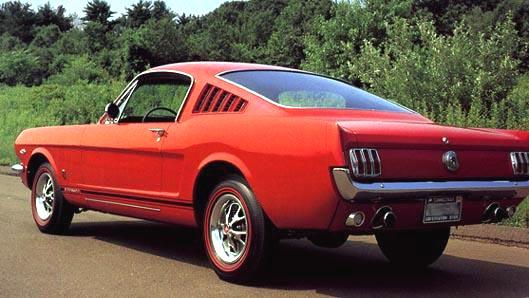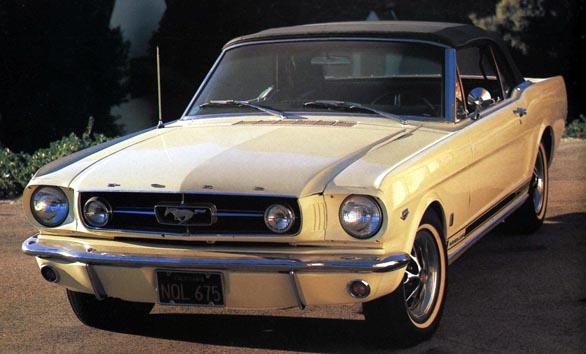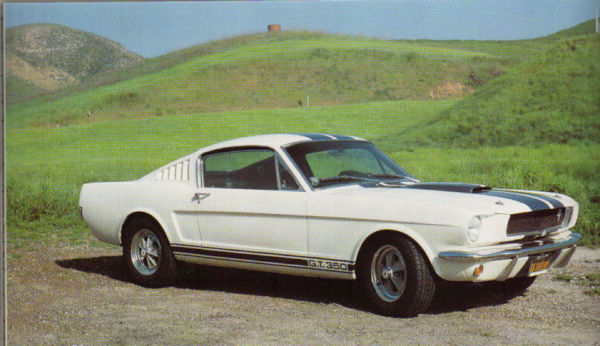|
|
|


|

|

|
1964.5-1968 original pony car
 In '65 the 170 six and 260 V8 were dropped for a 200 six and a 289 2bbl V8.
A GT package available on the two versions of the 289 4bbl V8's tightened up the
suspension. The High Performance 289 helped straight-line fun with a gross HP
rating of 271, probably about 200 net. In '65 the first Shelby prepped Mustang, the GT350, became available. The early
Shelbys were the most race-like of the Shelby Mustangs. In later years they were
done in house by Ford and and lost some of their sporting edge. Shelby built an
average of 2,000 cars a year from 1965 to 1970. The '65 Shelby GT350 came with
a 306 HP version of the HiPo motor. In '66 a 400 HP supercharged version was also
available.
In '65 the 170 six and 260 V8 were dropped for a 200 six and a 289 2bbl V8.
A GT package available on the two versions of the 289 4bbl V8's tightened up the
suspension. The High Performance 289 helped straight-line fun with a gross HP
rating of 271, probably about 200 net. In '65 the first Shelby prepped Mustang, the GT350, became available. The early
Shelbys were the most race-like of the Shelby Mustangs. In later years they were
done in house by Ford and and lost some of their sporting edge. Shelby built an
average of 2,000 cars a year from 1965 to 1970. The '65 Shelby GT350 came with
a 306 HP version of the HiPo motor. In '66 a 400 HP supercharged version was also
available. The 428's HP rating of 335 was very conservative
in order to "fool" the insurance companies (it was dyno'ed at the time to be about
400 HP). These big blocks had lots of torque and HP, but the cars were nose heavy
and didn't handle as well as the 289's.
Before the 428 came along a race bred 427 was offered for a short while, but this
engine was too expensive to build and maintain.
In '68 the 289 was stroked to 302 to help keep HP up as smog controls were already
starting to eat at the power.
The 428's HP rating of 335 was very conservative
in order to "fool" the insurance companies (it was dyno'ed at the time to be about
400 HP). These big blocks had lots of torque and HP, but the cars were nose heavy
and didn't handle as well as the 289's.
Before the 428 came along a race bred 427 was offered for a short while, but this
engine was too expensive to build and maintain.
In '68 the 289 was stroked to 302 to help keep HP up as smog controls were already
starting to eat at the power.